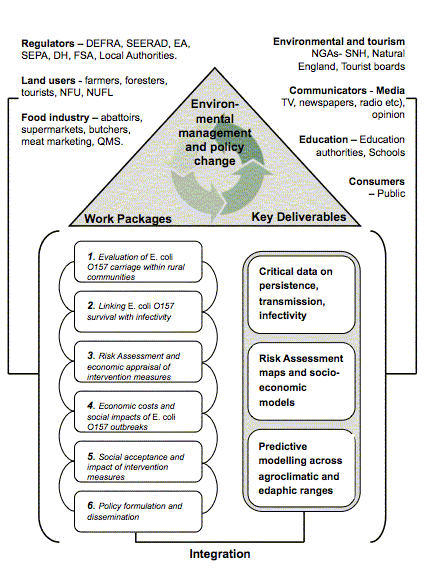Linking scientific knowledge with an understanding of socio-economic drivers of E. coli O157 risk is central to this project. Scientific means of quantitative data acquisition and analysis (including human/cattle/environmental sampling for E. coli O157, the application of risk assessment and epidemiological data and modelling routines), will combine with both quantitative and qualitative information that captures perception of risk, risk behaviours and communication, and the cost and acceptability of mitigation measures amongst rural stakeholders. The research methods for primary data gathering include the use of questionnaire surveys, in-depth interviews, and stakeholder workshop meetings. The work packages therefore build progressively throughout the research, relying consistently on a combination of biological, environmental, social and economic information to better manage E. coli O157 in rural environments.
E. coli O157 in rural communities |
||


